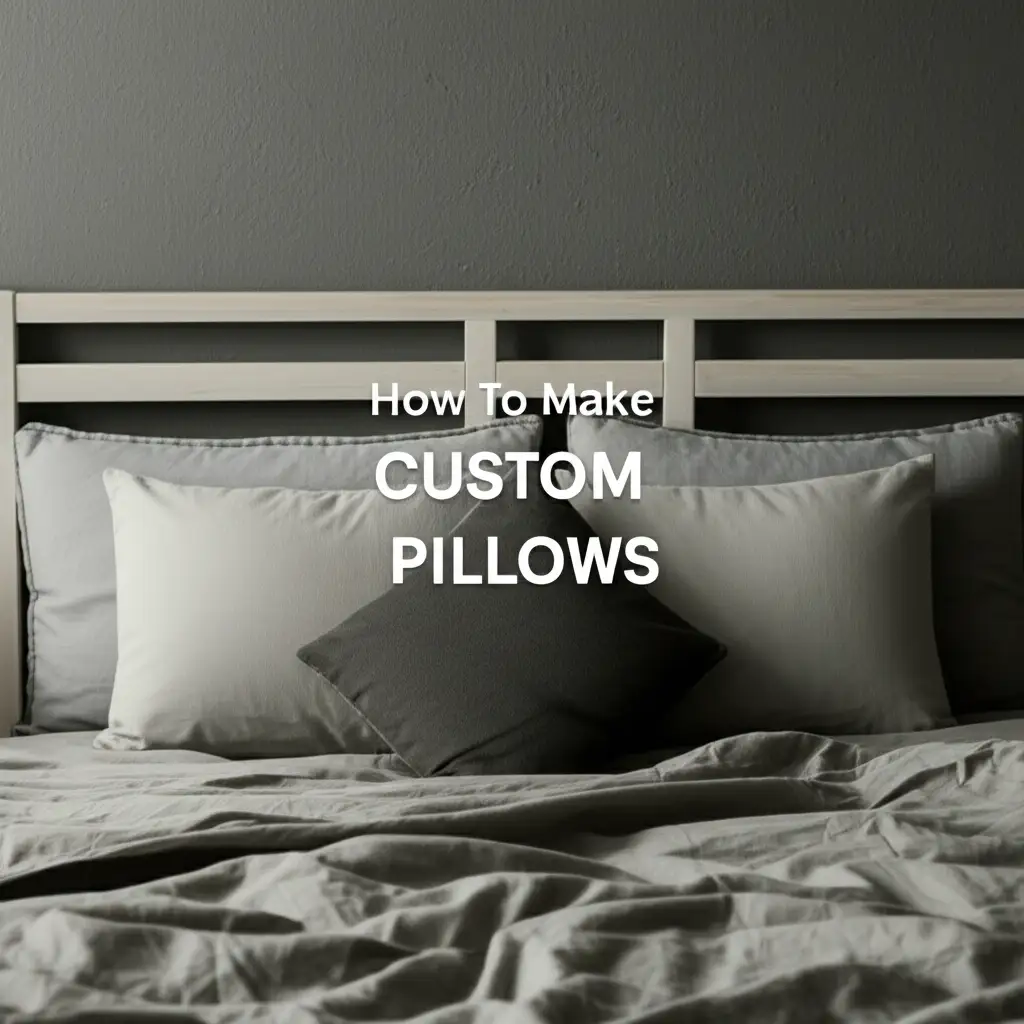· Mason Everett · DIY Home Decor · 15 min read
What Cotton Yarn For Crocheted Rugs

Choosing the Best Cotton Yarn for Your Crocheted Rug
Imagine stepping onto a soft, handmade rug in your home. This rug adds warmth and character to any room. Crocheting rugs offers a chance to create custom pieces. The right yarn makes a big difference in how your rug looks and lasts. When considering what cotton yarn for crocheted rugs works best, many factors come into play.
In this article, we will explore different cotton yarn types. We will look at their weights and discuss upcycled materials. You will learn about key considerations for making durable, washable rugs. I will share tips for design and care. My goal is to help you select the perfect cotton yarn for your next crochet rug project.
Takeaway:
- Select cotton yarn types like bulky cotton, recycled cotton, or t-shirt yarn for durability.
- Choose heavier yarn weights (bulky, super bulky, jumbo) to create a thick, sturdy rug fabric.
- Consider upcycled materials such as old T-shirts or fabric strips for an eco-friendly option.
- Focus on tight stitches and appropriate hook sizes for a dense, long-lasting rug.
- Ensure your chosen material is machine washable for easy maintenance.
When crocheting rugs, the best cotton yarn is typically a bulky, super bulky, or jumbo weight, unmercerized cotton, or recycled cotton blend. These yarns provide the necessary thickness and durability for floor use. They also offer excellent absorbency and washability, making them ideal for high-traffic areas or bathrooms.
Why Cotton Yarn Excels for Crocheted Rugs
Cotton yarn stands out as an excellent choice for crocheted rugs. It offers many benefits that other fibers do not. Cotton is a natural fiber, making it soft and comfortable underfoot. This comfort adds a cozy feel to any room.
One major benefit of cotton is its absorbency. This makes cotton rugs ideal for areas like bathrooms or kitchens. They can soak up spills and moisture effectively. Cotton rugs also dry relatively quickly. This helps prevent mildew growth in damp environments. For practical home use, absorbency is a key feature. If you want to learn more about materials suitable for damp areas, consider exploring how to make bathroom rugs.
Cotton is also known for its strength and durability. Rugs made from cotton yarn hold up well to foot traffic. They resist wear and tear over time. This means your handmade rug will last for many years. It will maintain its shape and appearance even with regular use. I appreciate the lasting quality of cotton.
Additionally, cotton yarn is easy to wash. Most cotton rugs can go directly into a washing machine. This simplifies cleaning and maintenance. A clean rug keeps your home fresh. This easy care makes cotton a practical choice for busy households.
Understanding Cotton Yarn Types for Rug Making
Not all cotton yarns are the same. Different types offer unique properties for your crocheted rug. Knowing these differences helps you make the right selection. Each type impacts the rug’s feel, look, and durability.
- Standard Unmercerized Cotton: This is the most common type of cotton yarn. It is soft, matte, and highly absorbent. Unmercerized cotton has a natural, rustic look. It is often inexpensive and widely available. This yarn works well for a sturdy yet soft rug.
- Mercerized Cotton: This cotton undergoes a special process. The process adds strength and a subtle sheen. Mercerized cotton is less likely to shrink. It also takes dye more brightly. While durable, it can be less absorbent than unmercerized cotton. Its smoother texture might be less ideal for grip.
- Recycled Cotton Yarn: This yarn is made from pre-consumer or post-consumer cotton waste. It is an eco-friendly option. Recycled cotton often comes in chunky weights. It provides a unique texture. This yarn makes a statement about sustainable crafting. I find recycled cotton has a beautiful, varied look.
- Cotton Blends: Some yarns mix cotton with other fibers. These blends can combine cotton’s best qualities with another fiber’s strengths. For example, a cotton-polyester blend might offer more resilience. A cotton-acrylic blend could be softer or cheaper. Always check the fiber content for your specific needs. These blends can create a more durable crochet rug suitable for various areas.
Choosing the right cotton type sets the foundation for your rug project. Consider where the rug will go and how much traffic it will see. Your material choice directly influences the final product’s quality.
Selecting the Right Yarn Weight and Ply for Rug Durability
Yarn weight is a crucial factor for crocheted rugs. It determines the thickness and density of your finished piece. Heavier yarn weights create more substantial and durable rugs. The ply, or number of strands twisted together, also affects strength.
- Bulky (Weight 5) and Super Bulky (Weight 6): These weights are excellent for rugs. They create a thick, plush fabric quickly. Bulky yarns make your rug feel substantial underfoot. They also provide good insulation. Projects with these weights work up fast. This is great for large items like rugs.
- Jumbo (Weight 7): This is the heaviest yarn weight available. Jumbo yarn creates incredibly thick and dense rugs. These rugs are very durable. They also offer a unique, oversized look. Working with jumbo yarn requires large hooks, often 15mm or larger. A jumbo cotton yarn rug will be very sturdy.
- T-shirt Yarn: This is a popular choice for rug making. T-shirt yarn is often recycled cotton jersey fabric cut into strips. It is naturally thick and slightly stretchy. This makes it perfect for dense, forgiving rugs. T-shirt yarn also comes in many colors. It creates a modern, often vibrant look. I love the texture t-shirt yarn gives.
- Multiple Strands of Worsted Weight (Weight 4): You can also hold two or more strands of worsted weight cotton yarn together. This creates a custom bulky effect. It gives you more control over color mixing. It also helps use up smaller skeins of yarn. This technique yields a sturdy fabric.
The ply of the yarn matters too. Yarns with more plies tend to be stronger. They are less likely to split while you crochet. A tightly plied yarn will stand up better to repeated use. It will also maintain stitch definition. Always aim for a yarn that feels robust.
Upcycling Materials: Beyond Traditional Cotton Yarn
Crocheting rugs offers a fantastic opportunity for upcycling. You can turn old textiles into unique floor coverings. This practice is environmentally friendly. It also allows for creative expression. Using upcycled materials can give your rug a distinct charm.
- Fabric Strips: Almost any sturdy fabric can become rug yarn. Old sheets, denim, or canvas are good options. Cut these fabrics into strips about 1-2 inches wide. You can connect strips by sewing or tying them together. This method creates a very durable and textured rug. I enjoy the challenge of mixing different fabric types.
- Old T-shirts (T-shirt Yarn): Old T-shirts are perfect for making your own t-shirt yarn. Cotton jersey stretches, making it forgiving to crochet. Cut shirts in a continuous spiral to create long strips. This type of yarn creates soft, squishy rugs. These rugs are comfortable for bare feet. This is an excellent way to reuse worn-out clothing.
- Duvet Covers or Bed Sheets: Large pieces of fabric like duvet covers can yield a lot of “yarn.” These materials are typically cotton. They are often soft and durable. They are also available in many patterns and colors. Using these larger textiles saves time on cutting many smaller pieces. This is similar to the concept of how to weave a cotton rug using fabric strips.
- Terry Cloth Towels: Old towels are highly absorbent. Cutting them into strips creates a very soft and thick yarn. These rugs are perfect for bathrooms or entryways. They offer great moisture absorption. The texture of terry cloth adds a unique feel to the rug.
When using upcycled materials, consider the fabric’s weight and stretch. Thicker fabrics create denser rugs. Stretchy fabrics are easier to crochet with. Ensure all materials are clean before use. This helps ensure your finished rug is fresh. Upcycling saves money and reduces waste.
Essential Considerations for Crocheting Durable Rugs
Making a crocheted rug involves more than just choosing yarn. Several key factors impact the rug’s durability and function. Paying attention to these details ensures your rug lasts. It also makes your rug safe for home use. A well-made rug adds lasting beauty.
- Stitch Density: A dense fabric is crucial for a rug. Loose stitches will cause the rug to stretch out of shape. They also wear down faster. Use a hook size that is smaller than you might typically use for the chosen yarn weight. This creates tight, firm stitches. Common stitches for rugs include single crochet (SC) or half double crochet (HDC). These stitches make a solid fabric.
- Hook Size: Match your hook size to your yarn and desired density. For bulky cotton yarns, a 10mm to 15mm hook is common. For t-shirt yarn, an even larger hook might be needed. The goal is to create a stiff, tight fabric that does not gap. Test a small swatch to confirm the density.
- Non-Slip Backing: This is a safety essential for any rug. Crocheted rugs can slide on smooth floors. A non-slip backing prevents accidents. You can buy non-slip rug pads to place under your rug. Another option is to apply a liquid latex or silicone rug backing directly to the underside of the rug. This coats the yarn. A non-slip backing helps secure the rug.
- Washability: Choose yarn that is machine washable. Rugs get dirty easily. Easy cleaning ensures your rug stays fresh. Cotton is generally machine washable and can handle frequent cleaning. Always check yarn labels for specific washing instructions. Being able to clean your rug well is important, especially for things like how to clean area rugs inside.
- Rug Shape and Size: Plan your rug’s shape and size. Consider where it will go. A small round rug might be an accent. A long runner could fit a hallway. Larger rugs use more yarn and time. Simple shapes are easier for beginners. Think about how the rug fits your space.
These considerations will help you create a functional and lasting rug. A durable rug is a valuable addition to your home. It provides comfort and style for years.
Caring for Your Crocheted Cotton Rugs
Proper care extends the life of your crocheted cotton rug. Cotton is generally robust, but smart cleaning keeps it looking great. Regular maintenance prevents excessive wear. This ensures your handmade piece remains a cozy addition.
- Regular Shaking and Vacuuming: For daily care, shake out your rug outdoors to remove loose dirt. For larger rugs, regular vacuuming is essential. Use a vacuum cleaner without a beater bar or set it to a high pile setting. A beater bar can pull on the fibers. This can damage the stitches over time. Gentle vacuuming helps maintain the rug’s cleanliness.
- Machine Washing: Most cotton rugs can be machine washed. Use cold water and a gentle cycle. Hot water can cause cotton to shrink. A mild detergent works best. Avoid harsh chemicals or bleach, which can weaken fibers or fade colors. For larger rugs, a commercial-size washer may be necessary. Always air dry your rug flat. This helps maintain its shape. Tumble drying can cause shrinking or misshaping.
- Spot Cleaning: For small spills, act quickly. Blot the spill with a clean cloth. Use a small amount of mild soap and water for stains. Avoid rubbing, which can spread the stain. Rinse the area thoroughly with a damp cloth. Let it air dry completely. Quick action prevents stains from setting.
- Air Drying Flat: After washing, lay your rug flat on a clean, dry surface. This prevents stretching and distortion. Hanging a wet, heavy rug can pull its shape. If possible, dry it outdoors on a sunny day. Ensure it is completely dry before placing it back on the floor. This prevents mildew growth.
- Storing Your Rug: If you need to store your rug, roll it tightly. Do not fold it, as this can create permanent creases. Store it in a cool, dry place. Avoid direct sunlight or damp areas. Use a breathable fabric bag for storage. This protects it from dust and pests.
Caring for your cotton rug is simple. Consistent care will keep it beautiful and functional for many years. Regular attention ensures your hard work lasts. Remember, a clean rug adds charm to your home.
Creative Ideas and Design Tips for Crocheted Rugs
Crocheted rugs offer endless design possibilities. You can personalize them to match any decor. Exploring different colors, patterns, and placements brings unique style to your home. My favorite part is seeing how a simple idea comes to life.
- Color Palettes: Choose colors that complement your room’s existing decor. Monochromatic rugs offer a subtle look. Bold, contrasting colors make a statement. You can also use gradient yarns for a flowing color effect. Consider using multiple colors to create stripes, blocks, or geometric patterns. For instance, knowing what color rugs for tell bathroom can inspire your choices for this specific space.
- Pattern Exploration: Simple stitches like single crochet create a solid, textured surface. For more visual interest, try bobble stitches or popcorn stitches. These add raised texture. You can also create spirals, squares, or rectangles. Experiment with different stitch combinations. This changes the rug’s overall feel.
- Shape and Size Variations: Don’t limit yourself to rectangles. Round rugs are cozy accents. Oval rugs fit well in narrower spaces. You can also make unique shapes, like clouds or stars, for a child’s room. Consider the scale of the room. A small accent rug might go by a chair. A large rug can anchor a living room space. Understanding how to use rugs to decorate can help you decide on the best shape and size for your needs.
- Adding Embellishments: Once your rug is complete, you can add extra touches. Fringe or tassels along the edges add a playful element. You can also crochet appliqués, like flowers or stars, and sew them onto the rug. These small details personalize your creation.
- Theme Rugs: Design a rug around a specific theme. A beach-themed rug might use blues and sands, with shell appliqués. A nature-themed rug could feature greens and browns, with leaf patterns. This makes the rug a focal point in the room. This approach makes your rug a conversation starter.
These design ideas help you make your rug unique. Personalizing your crochet project adds deep satisfaction. Your handmade rug becomes a true reflection of your style. It adds a special touch to your living space.
FAQ Section
What is the best yarn weight for a crocheted rug? The best yarn weight for a crocheted rug is typically bulky (Weight 5), super bulky (Weight 6), or jumbo (Weight 7). These heavier weights create a dense, sturdy fabric that stands up to foot traffic. They also allow rugs to work up quickly. Using a lighter weight yarn would make a flimsy rug.
Can I use regular worsted weight cotton yarn for a rug? Yes, you can use regular worsted weight cotton yarn for a rug, but it is best to hold multiple strands together. Crocheting with two, three, or even four strands of worsted weight yarn simultaneously creates a thicker fabric. This mimics the density of bulkier yarns, making your rug more durable and substantial.
How do I make my crocheted cotton rug non-slip? To make your crocheted cotton rug non-slip, you have a few options. You can place a non-slip rug pad underneath it. Another method is to apply liquid latex or silicone rug backing directly to the underside of the rug. This creates a textured, grippy surface. Always ensure the rug is completely dry before applying any backing.
Are cotton rugs good for bathrooms? Cotton rugs are excellent for bathrooms due to cotton’s high absorbency. They can effectively soak up moisture, preventing slips on wet floors. Additionally, cotton is generally machine washable, making it easy to clean and maintain hygiene in a bathroom environment. They are a practical and comfortable choice.
How often should I wash my crocheted cotton rug? The frequency of washing your crocheted cotton rug depends on its placement and foot traffic. For high-traffic areas or bathrooms, washing every few weeks to a month is advisable. For decorative rugs in less-used spaces, washing every few months might suffice. Regular shaking and vacuuming between washes help keep it clean.
Can I use old T-shirts to crochet a rug? Yes, old T-shirts are a popular and eco-friendly material for crocheting rugs. You can cut them into continuous strips to create your own t-shirt yarn. This upcycled material is soft, slightly stretchy, and creates a wonderfully thick and durable rug. It is a creative way to repurpose old clothing.
Conclusion
Choosing the right cotton yarn for crocheted rugs is a journey of discovery. You have learned that cotton is a top choice due to its durability, absorbency, and washability. We explored various cotton types, from standard to recycled cotton. We also looked at yarn weights, understanding that bulky options make the sturdiest rugs. Moreover, we discussed the exciting potential of upcycling materials.
Remember to prioritize stitch density and consider a non-slip backing for safety. Proper care, including gentle washing and flat drying, will ensure your crocheted cotton rug lasts for many years. I encourage you to experiment with colors, patterns, and shapes. Your handmade rug is more than just a floor covering; it is a piece of art. It adds a unique, cozy touch to your home. Start your next crochet rug project with confidence. You will create something truly special.





